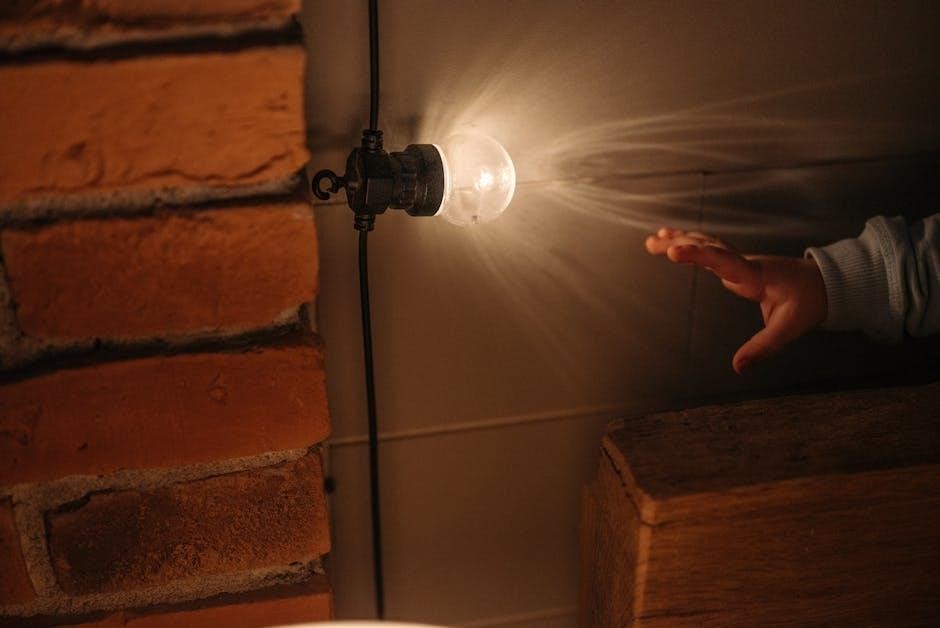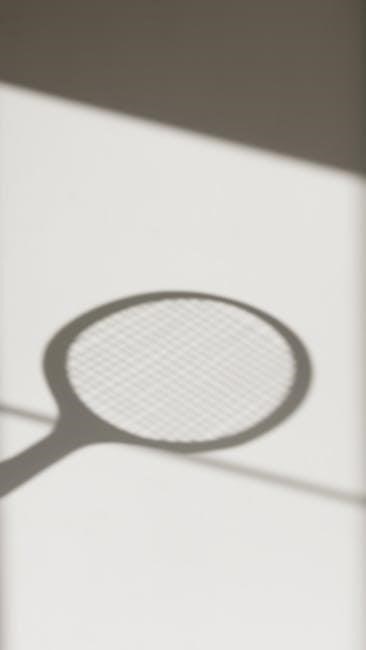Clipsal Single Light Switch Wiring Diagram PDF: An Overview
Clipsal light switches offer innovative features and reliable performance, enhancing lighting systems․ Wiring diagrams are crucial for correct installation, especially with Clipsal’s varied product range․ Accessing a PDF overview simplifies understanding the wiring process․
Clipsal, an Australian division of Schneider Electric, offers a diverse range of light switches known for their quality materials and innovative design․ The Clipsal Saturn series, with its elegant glass look available in Pure White, Ocean Mist and Espresso Black, is a popular choice for modern homes, being hardwearing․
Clipsal switches are designed for easy installation, making them suitable for both homeowners and electricians․ Their products include push-button switches, dimmer switches, and smart switches like the Wiser range, offering app control and timer functions․
The Clipsal Iconic series provides additional flexibility with features like the ControlLink and various mechanisms such as intermediate switches and push button wiser smart switch mechanism; Clipsal also offers specialized switches, such as the 30M switch mechanism, ideal for vertical or horizontal mounting, and the 40 series, which introduces new features designed to enhance functionality and usability․
Whether for basic on/off control or advanced home automation, Clipsal light switches are a reliable and stylish option․
Benefits of Using Clipsal Light Switches
Clipsal light switches offer numerous advantages, making them a preferred choice for homeowners and electricians alike․ Their easy installation is a major benefit, simplifying the setup process and reducing time․ Clipsal switches are manufactured from premium quality materials, ensuring durability and long-term reliability․
The Clipsal Saturn range, for example, features a hardwearing finish ideal for kitchens, bathrooms, and family areas, combining aesthetic appeal with practical functionality․ Clipsal switches provide a range of control options, from basic on/off functions to dimmer switches for adjusting light intensity․ Smart switches, such as the Wiser series, offer advanced features like app control and timer settings, enhancing convenience and energy efficiency․
The Clipsal Iconic series allows further customization and integration with smart home systems․ Clipsal products are designed to meet Australian electrical standards, ensuring safety and compliance․ With a variety of styles and functionalities, Clipsal light switches enhance the comfort, convenience, and value of any home․

Understanding Wiring Diagrams
Wiring diagrams are essential for safely and correctly installing electrical components like light switches․ They provide a visual representation of connections, ensuring proper function and preventing hazards․ Accurate diagrams are key to electrical work․
Importance of Accurate Wiring Diagrams
Accurate wiring diagrams are paramount in electrical installations, especially when dealing with Clipsal light switches․ These diagrams serve as blueprints, guiding electricians and homeowners to connect circuits correctly․ Without precise diagrams, the risk of faulty connections increases significantly, potentially leading to malfunctions or electrical hazards․
Incorrect wiring can cause short circuits, posing fire risks and damaging electrical components․ Furthermore, inaccurate diagrams can result in non-functional switches, requiring extensive troubleshooting and rework․ Time and resources are wasted when relying on flawed or incomplete information․
Clipsal light switches, with their innovative features, demand meticulous wiring․ Accurate diagrams ensure that these features operate as intended, providing optimal performance and safety․ A well-documented wiring diagram is invaluable for future maintenance and modifications, simplifying identification and resolution of issues;
Therefore, investing in accurate and comprehensive wiring diagrams is crucial for any electrical project involving Clipsal light switches, safeguarding against potential risks and ensuring a reliable and efficient electrical system․
Common Symbols and Notations in Electrical Diagrams
Understanding common symbols and notations in electrical diagrams is crucial for interpreting wiring schematics accurately․ Electrical diagrams use standardized symbols to represent various components like switches, wires, light fixtures, and power sources․ Recognizing these symbols allows for correct identification and connection of electrical elements․
For instance, a circle with a line through it typically represents a light bulb, while different symbols denote single-pole, double-pole, or two-way switches․ Lines represent wires, and their connections are indicated by dots or junctions․ Notations provide additional information, such as voltage ratings, amperage, and wire gauges․
Clipsal wiring diagrams often employ specific notations to indicate unique features of their light switches, such as dimmer compatibility or smart switch functionality․ Familiarity with these notations is essential for proper installation and troubleshooting․ Diagrams might also include color codes for wires, aiding in correct identification and connection․
Mastering common electrical symbols and notations empowers individuals to confidently navigate wiring diagrams, ensuring safe and effective electrical installations․ This knowledge minimizes errors, improves efficiency, and promotes a deeper understanding of electrical systems․

Clipsal Single Light Switch Wiring: Step-by-Step Guide
This section provides a detailed, step-by-step guide to wiring a Clipsal single light switch․ Following these instructions carefully ensures safe and correct installation, minimizing potential electrical hazards and guaranteeing optimal performance․
Safety Precautions Before Wiring
Before commencing any electrical work, particularly wiring a Clipsal light switch, prioritizing safety is paramount․ Begin by disconnecting power to the relevant circuit at the main switchboard to prevent electric shock․ Double-check that the circuit is de-energized using a reliable voltage tester․ Never assume the circuit is off without verification․
Wear appropriate personal protective equipment (PPE), including insulated gloves and safety glasses․ Ensure the work area is dry and well-lit․ Avoid working in damp or wet conditions, as water conducts electricity․ If unsure about any aspect of the wiring process, consult a qualified electrician․
Familiarize yourself with the wiring diagram specific to the Clipsal switch being installed․ Understand the terminal markings and wiring configurations․ If dealing with older wiring, inspect for damage or deterioration and replace as necessary․ Always adhere to local electrical codes and regulations․ A safe approach guarantees a successful and hazard-free installation․
Tools and Materials Required
Successfully wiring a Clipsal light switch requires specific tools and materials․ Essential tools include a voltage tester to ensure the circuit is de-energized, a Phillips head and flathead screwdriver for terminal connections, and wire strippers to prepare the wires․
Needle-nose pliers are useful for manipulating wires in tight spaces, and electrical tape is essential for insulating connections․ A utility knife or wire cutter may be needed for trimming wires․ A multimeter can help diagnose wiring issues if they arise․
Material-wise, you’ll need the appropriate Clipsal light switch mechanism (e․g․, 30M), suitable electrical wire (typically TPS – Tough Plastic Sheathed), and wire connectors or terminals if required․ Ensure all materials comply with local electrical standards․ A Clipsal switchplate from series like 2000, Classic C2000, or Slimline is also needed․ Having everything prepared ensures a smooth and safe wiring process․
Wiring a Standard Single Light Switch (1-Way)
Wiring a standard single light switch, often referred to as a 1-way switch, involves connecting the active (or line) wire to the switch and then to the light fixture․ Begin by ensuring the power is disconnected at the main switchboard․
Identify the active wire, neutral wire, and earth wire․ The active wire is cut, and each end is connected to the switch terminals․ One end goes to the “common” terminal, and the other to the “load” terminal․ The neutral wire goes directly to the light fixture, bypassing the switch․
The earth wire should also be connected to the fixture if it requires earthing․ Double-check all connections are secure․ Refit the switch into the wall and reconnect the power․ Test the switch to ensure the light turns on and off correctly․ This setup controls the light from a single location․
Wiring a Two-Way Light Switch
Wiring a two-way light switch enables control of a single light from two different locations․ This configuration uses two switches, each with three terminals․ Start by disconnecting power at the main switchboard for safety․ Identify the active wire at the first switch location․
Connect the active wire to the common terminal of the first switch․ Run two wires, called “strappers” or “travelers,” between the two switches, connecting them to the remaining two terminals on each switch․ At the second switch, connect the common terminal to the light fixture․
The neutral wire runs directly to the light․ Ensure all connections are secure․ Refit the switches into their respective wall boxes․ Reconnect the power at the main switchboard․ Test both switches to ensure the light can be turned on and off from either location․ This setup offers convenient control․

Advanced Wiring Configurations
Beyond standard setups, advanced wiring involves dimmers and smart switches․ These configurations enhance functionality and control․ Understanding these setups requires careful attention to wiring diagrams and safety precautions․ Integrating smart technology offers added convenience and automation․
Wiring with Dimmers
Wiring dimmers with Clipsal switches offers enhanced lighting control, allowing adjustment of brightness to suit various needs․ Clipsal provides dimmer switches compatible with their standard ranges, ensuring seamless integration․ Always disconnect power before commencing any wiring work and consult the specific wiring diagram provided with your Clipsal dimmer switch․
Different types of dimmers exist, including rotary, push-button, and smart dimmers, each requiring slightly different wiring configurations․ Ensure the dimmer is compatible with the type of lights being controlled, such as LED or incandescent․ Incorrect wiring can lead to flickering, buzzing, or even damage to the dimmer or lights․
Refer to Clipsal’s documentation for detailed wiring diagrams and instructions specific to your chosen dimmer model․ When wiring, pay close attention to the terminals and ensure connections are secure․ For complex installations or if you are unsure, consult a qualified electrician to ensure safety and proper functionality․
Properly installed dimmers not only enhance ambiance but can also save energy, extending the lifespan of your light bulbs․
Wiring with Smart Switches (e․g․, Wiser)
Integrating smart switches, such as Clipsal’s Wiser range, into your lighting system brings advanced control and automation possibilities․ These switches often require a neutral wire, so ensure your existing wiring supports this configuration․ Always disconnect power before beginning any wiring modifications and consult the specific wiring diagram for your smart switch model․
Clipsal Wiser switches offer features like app control, scheduling, and voice command compatibility․ Wiring typically involves connecting the line, load, neutral, and sometimes an earth wire, depending on the model․ Accurate wiring is crucial for the switch to function correctly and communicate with your smart home network․
Refer to the Clipsal Wiser documentation for detailed wiring diagrams and setup instructions․ Some smart switches may also require configuration through a dedicated app or hub․ Ensure the switch is properly paired with your network for full functionality․ If you are unfamiliar with smart home wiring, it’s best to consult a qualified electrician to avoid potential issues and ensure safety․
Smart switches enhance convenience and energy efficiency by allowing remote control and automated lighting scenes․

Troubleshooting Common Wiring Issues
Addressing wiring problems requires caution․ Begin by disconnecting power․ Common issues include loose connections or incorrect wiring based on diagrams․ Identifying these faults ensures safety and functionality․ Seek professional help if unsure․
Identifying and Resolving Faulty Connections
Faulty connections are a frequent cause of light switch malfunctions, often stemming from loose wires or incorrect wiring based on the Clipsal diagram․ Begin by safely disconnecting power at the main switchboard․ Carefully inspect each wire connection, ensuring secure and tight fittings within the switch mechanism․ Look for any signs of corrosion or damage on the wires themselves, as these can impede electrical flow;
Refer closely to the Clipsal wiring diagram PDF to confirm that each wire is connected to the correct terminal․ A multimeter can be used to test continuity and voltage levels, helping pinpoint the exact location of the fault․ If a wire is damaged, replace it entirely rather than attempting a repair․
For loose connections, tighten the screws on the terminals, making sure not to overtighten and strip the threads․ After making any adjustments, re-test the circuit and ensure the light switch operates correctly․ If the problem persists, consult a qualified electrician for assistance․ Prioritizing safety is paramount when dealing with electrical wiring, and professional help guarantees a safe and effective resolution․
Common Mistakes to Avoid
When wiring Clipsal light switches, several common mistakes can lead to malfunctions or safety hazards․ A frequent error is neglecting to disconnect power before starting the work, which can result in electric shock․ Always turn off the circuit breaker at the main switchboard before handling any wires․ Another mistake involves misinterpreting the wiring diagram, leading to incorrect connections․ Double-check the diagram, paying close attention to the terminal markings․
Using improper tools, like damaged screwdrivers, can also cause problems․ Employ tools that are in good condition and appropriately sized for the screws․ Failing to securely tighten connections is another common issue; loose wires can arc and create a fire risk․ However, avoid overtightening, which can strip the screw threads․
Forgetting to properly earth the circuit, when required, is a critical safety oversight․ Ensuring correct earthing protects against electrical faults․ Finally, rushing through the process increases the likelihood of errors․ Take your time, follow the Clipsal wiring diagram carefully, and verify each connection before restoring power․ If unsure, always consult a licensed electrician․
